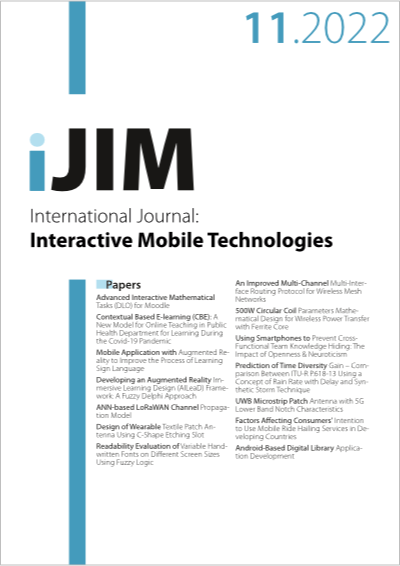Design of Wearable Textile Patch Antenna Using C-Shape Etching Slot
DOI:
https://doi.org/10.3991/ijim.v16i11.30101Keywords:
Textile antenna, Multiple bands applications, C-shape etching slot (CSES), Bending effect, Radiation effect on human tissueAbstract
With today's advanced technology microstrip patch antennas are more flexible and stronger than ever before. These antennas can work on various frequencies ranging from low to high for a huge variety of applications including medical, military and quite a few more. This paper presents the textile antennas those are designed for Wi-MAX application with the frequency range of 3.09–3.94 GHz, fifth generation (5G) lower band with the resonant frequency of 4.23–5.65 GHz and UWB 4.62–10.74 GHz applications. This work also introducing a single C-shape etching slot (CSES) in a rectangular patch antenna. The textile substrate (jeans) has been applied to reduce the surface wave losses and design a wearable textile antenna using microstrip line feed technology. Bending effect up to 750 and radiation effect on human tissue as specific absorption rate (SAR) are analyzed using Computer Simulation Technology (CST) tools. Textile antennas for multiple band applications can be created using CSES which can be attributed to cotton, denim cotton and polyester.
Downloads
Published
How to Cite
Issue
Section
License
Copyright (c) 2022 Md Rafiqul Islam, M. M. Hasan Mahfuz, Mohamed Hadi Habaebi, Jalel Chebil

This work is licensed under a Creative Commons Attribution 4.0 International License.


